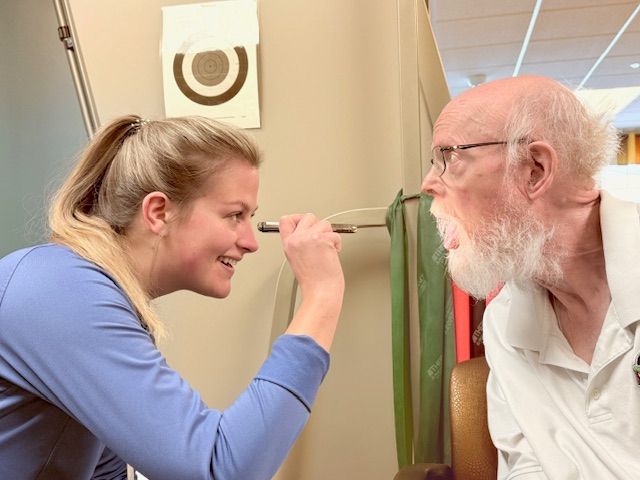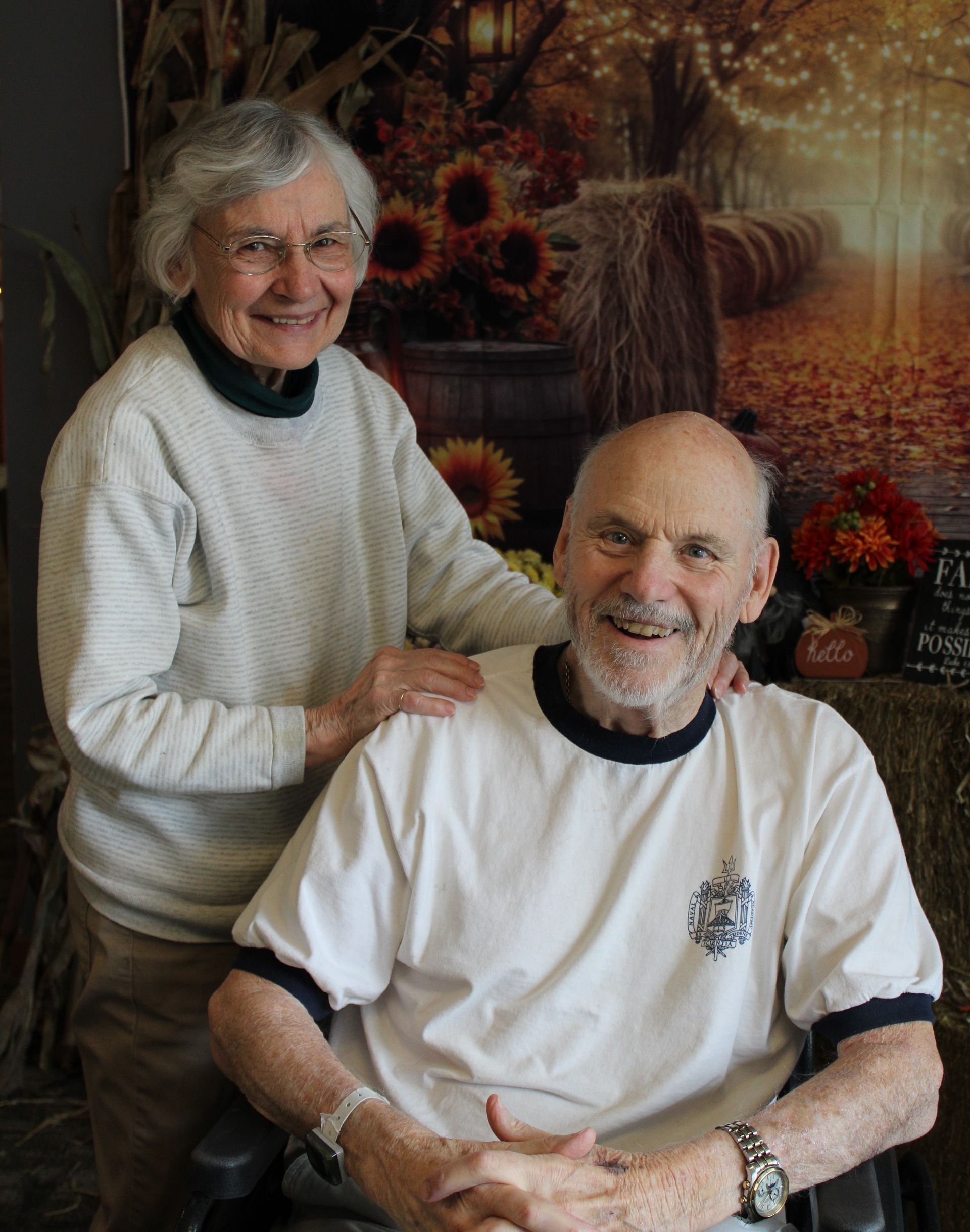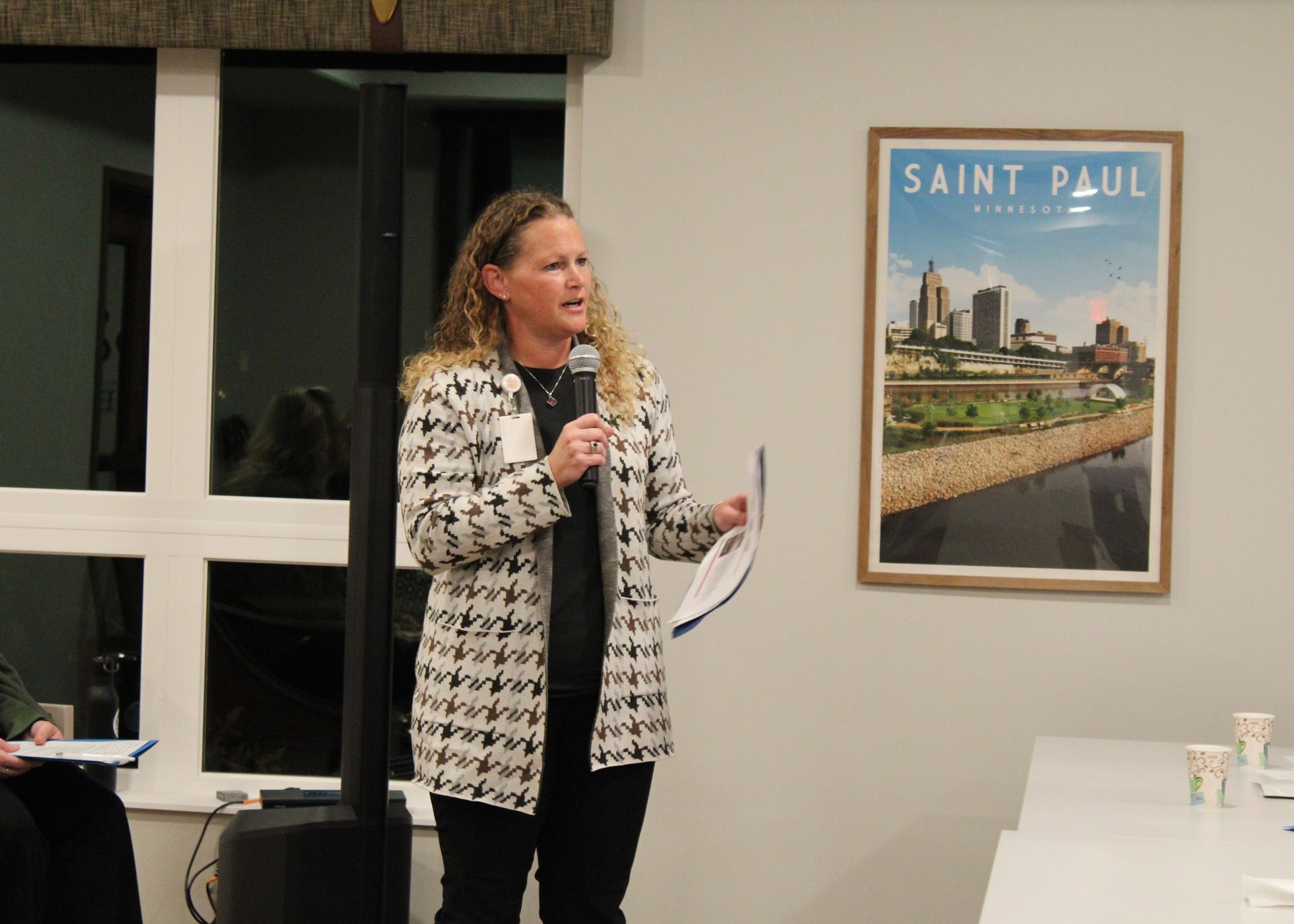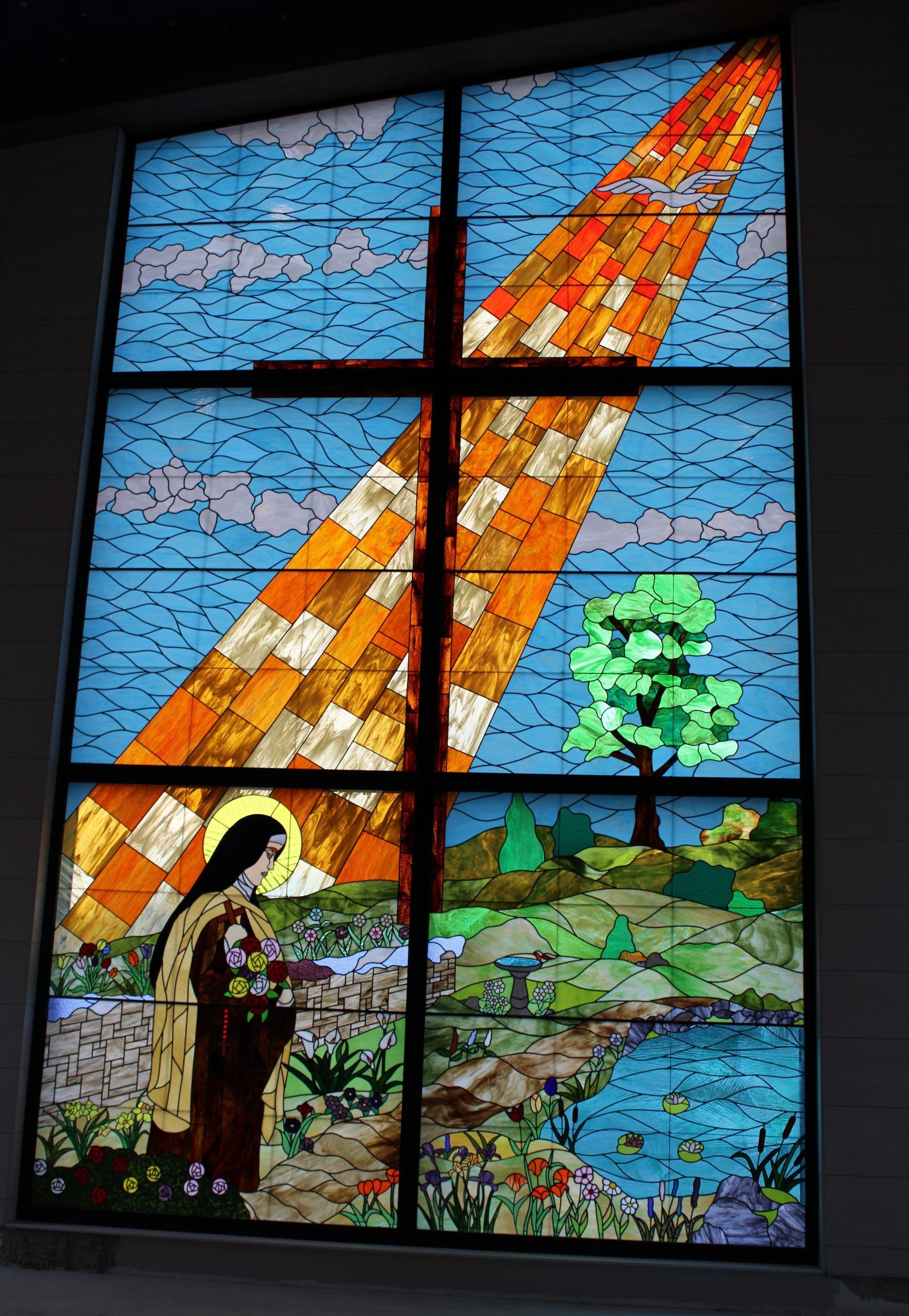
Saint Therese of Corcoran’s Stained Glass Window – A Labor of Love
Our newest Twin Cities senior living community, Saint Therese of Corcoran, is stunning. In so many ways. As you walk in the main entrance, you can feel its vibrancy, energy, warmth and light. This is no whisper-quiet environment – by design – and early reviews seem to reflect that our residents, family and staff are enjoying the common spaces and their new apartments.
But perhaps the most stunning aspect of this new community has yet to be revealed, the Father Mycue Chapel, named after one of the Saint Therese founders, Father Gordon Mycue. When completed later this year, the chapel will beautifully combine the old with the new and provide a unique place for spiritual care and worship.
While the chapel is still under construction, one of its most impressive elements – the soaring stained glass window – is now complete. The 21-foot tall window dominates the western-facing wall of the chapel and is visible from County Road 116.
It was designed and created by local stained glass craftsman,
Wayne Norton of Plymouth. Following is the first in a series of stories about the Corcoran chapel.
Wayne Norton has been plying his trade in his basement studio for the past 15-20 years, and during that time has created stained glass for 30 different senior living communities, one of which is the large stained glass window at Saint Therese of Woodbury.
“I’ve always had a soft spot in my heart for seniors,” said Norton. “My parents moved into a senior community and I saw their quality of life dramatically improve after they did. I got to see that it was all about care and love.”
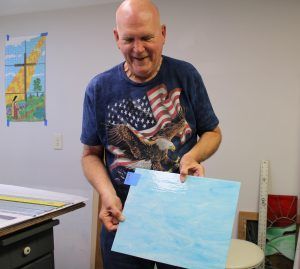
Wayne Norton with a sheet of glass

Concept sketch for the window
He was approached by Saint Therese early on in the development stage of Corcoran and worked with staff and architects, Pope Design Group, to refine and then finalize the design which is 21 feet tall by 12 feet wide.
The design showcases St. Therese of Lisieux, the inspiration for our organization name, standing in a garden illuminated in a ray of light.
“From my research, I came to understand that St. Therese’s life was filled with love for others. The concept of the beams coming down from heaven and the dove floating in the beam, to me represent the Father, Son and Holy Spirit. As the light reaches and shines on St. Therese, she is being blessed by God and surrounded by flowers which were a joy to her. This is a peaceful and serene moment in nature created by God being enjoyed by St. Therese.”
The actual creation of the window entails countless steps, including:
- Creating the pattern (there are over 2,000 pieces of glass).
- Purchasing colored stained glass sheets (58 different colors/types were used).
- Dividing the overall window into six panels for installation purposes and cutting each piece of glass.
- After that, each piece was painstakingly secured into the larger whole with strips of lead came (over 315 feet).

The pattern that Wayne used for the individual pieces of glass
- All of the joints were soldered (26 lbs. of solder used).
- Grout was worked around all pieces. Each side had to be soldered, grouted, cleaned and polished.
- Due to the size of the windows, horizontal and vertical bracing bars were then added.
- Finally, the windows were cleaned, polished and crated for delivery.
The intricate installation happened on November 26 with Norton and a crew of four helping put the panels in place. Local cable channel CCX Media was on hand to cover the story which aired on December 5. In total, the project took Norton over 2200 hours, spread over 16 months. He started “cutting glass” in July 2023 and as mentioned, finished in late November.
As for the donation aspect, Norton has constructed the window at a much lower cost than Saint Therese could do otherwise, and he has donated a significant portion of his time.
“I look at stained glass as my way to give back to God, for what I’ve been given through life,” said Norton.
Next in this series, a story about the generous donation of liturgical objects for Saint Therese of Corcoran, from a Catholic church in Hopkins.
About
At Saint Therese, our heartfelt purpose since 1968 has been a people first approach to living well by providing senior care and services where every life we touch feels welcomed, respected, and heard. We achieve this by doing ordinary things with extraordinary love every single day. Contact us to learn more.

